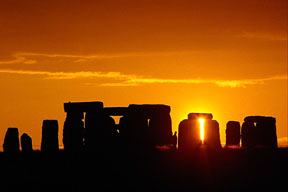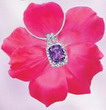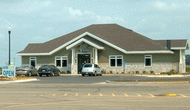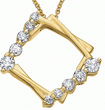BAMBU Latest Issues
BAMBU-15
See also:
BAMBU Archives: Contents
Brit-Am Megalithic Bulletin Update (BAMBU)
NEWS AND INFORMATION
Tracing The Israelite Paths of Migration
according to the Directions of the Prophet Jeremiah 31:21
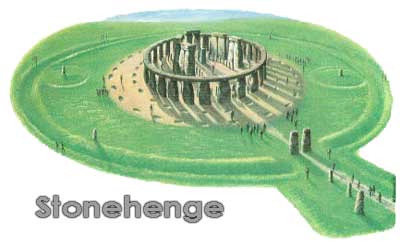
Dolmens and Megaliths
BAMBU-15
Brit-Am Megalithic Bulletin Update
22 Sivan 5769 30 June 2009
Contents:
1. Articles About Stonehenge
2. Was there An Ancient Wooden Replica of Stonehenge at Tara in Ireland?
3. The Dana i.e. Tuatha
de Danaan:
Sources
1. Articles About Stonehenge
The Essence of Stonehenge: Photo
http://www.telegraph.co.uk/news/picturegalleries/
uknews/4602637/The-essence-of-Stonehenge.html
Squaring the Circle at Stonehenge
http://www.eternalidol.com/?p=472
The fence around Stonehenge
http://dienekes.blogspot.com/2008/
09/fence-around-stonehenge.html
Stonehenge controversy continued
http://dienekes.blogspot.com/2008/
10/stonehenge-controversy-continued.html
Acoustics unlock clues to Stonehenge, lecturer says
http://www.thisiswiltshire.co.uk/news/headlines/
3991539.Acoustics_unlock_clues_to_Stonehenge__lecturer_says/
2. Was there An Ancient Wooden Replica
of Stonehenge at Tara in Ireland?
Wood you believe it? Stonehenge find at Tara
http://www.independent.ie/national-news/
wood-you-believe-it-stonehenge-find-at-tara-1706040.html
SCIENTISTS have unearthed what appears to be a mammoth wooden version of the
famous Stonehenge monument at the Hill of Tara.
In a revealing new RTE documentary, many theories and insights into the
country's prehistoric past and 150,000 ancient monuments are unveiled and
explained.
For the first time, people will be able to view a computer-generated recreation
of what archaeologists believe was a major wooden structure -- a version of
Britain's Stonehenge -- at the ancient seat of the Irish high kings in the Hill
of Tara in Co Meath.
Archaeologist Joe Fenwick revealed a LiDAR (Light Detecting and Ranging) laser
beam had been used to scan the ground surface to create a three-dimensional map,
which revealed more than 30 monuments around Tara.
Using another technique -- described as taking an X-ray through the hillside --
archaeologists discovered the huge monument, a ditch stretching six metres wide
and three metres deep in the bedrock.
The ditch, circling the Mound of the Hostages passage tomb, separated the
outside world from the ceremonial centre of Tara.
It was believed the ancient architects had also surrounded the ditch with a
massive wooden structure on each side -- a version of Stonehenge -- on a large
scale. Its sheer size meant a whole forest would have had to be cleared to build
it.
"In scale, it is comparable, for example, to Croke Park's pitch. The Hill of
Tara had enormous ritual significance over the course of 5,000-6,000 years, so
it's not surprising that you get monuments of the scale of the ditch pit
circle," said Mr Fenwick, from the Department of Archaeology, NUI Galway.
Cutting-edge technology is helping to provide a new insight into the lives of
our ancestors, according to the documentary makers behind 'Secrets of the
Stones'. - Louise Hogan
3. The Dana i.e.
Tuatha
de Danaan:
Sources
www.greatdreams.com/tuatha.htm
TUATHA DEL DANAAN
compiled by Dee Finney
Extracts
of Brit-Am Relevance
A poem in the Book of Leinster lists many of the Tuatha De but ends "Although
[the author] enumerates them, he does not worship them." Goibniu, Creidhne and
Luchta are referred to as Tre De Dana ("three gods of craftsmanship"), and the
Dagda's name is interpreted in medieval texts as "the good god." Even after they
are displaced as the rulers of Ireland, characters such as Lug, the M?r?an,
Aengus and Manannan appear in stories set centuries later, showing all the signs
of immortality. They have many parallels across the Celtic world. Nuada is
cognate with the British god Nodens; Lugh is a reflex of the pan-Celtic deity
Lugus; Tuireann is related to the Gaulish Taranis; Ogma to Ogmios; the Badb to
Catubodua.
Legendary history
The Tuatha De were descended from Nemed, leader of a previous wave of inhabitants
of Ireland. They came from four northern cities, Falias, Gorias, Murias and
Finias, where they acquired their occult skills and attributes. They arrived in
Ireland, on or about May 1 (the date of the festival of Beltaine), on dark
clouds, although later versions rationalise this by saying they burned their
ships to prevent retreat, and the "clouds" were the smoke produced.
Led by their king, Nuada, they fought the First Battle of Magh Tuiredh (Moytura),
on the west coast, in which they defeated and displaced the clumsy and ill-armed
Fir Bolg, who then inhabited Ireland. Nuada lost an arm in the battle. Since he
was no longer perfect, he could not continue as king and was replaced by the
half-Fomorian Bres, who turned out to be a tyrant. The physician Dian Cecht
replaced Nuada's arm with a working silver one and he was reinstated as king.
However, Nuada was dissatisfied with the replacement so he turned to Dian
Cecht's son Miach, who made him a new hand of flesh and blood. Dian Cecht slew
his own son out of jealousy.
Because of Nuada's restoration as leader the half-Fomorian Bres complained to
his family.
The Tuatha D?then fought the Second Battle of Magh Tuiredh against the Fomorians.
Nuada was killed by the Fomorian king Balor's poisonous eye, but Balor was
killed by Lugh, who took over as king.
Lugh
The Celtic god Lugh was also called Lamfhada (of the long arm) in Gaelic.
Lugh
The evil Underworld god Balor was the sun god Lugh's grandfather, whom Lugh,
"the shining one" had to kill. Lugh was king of the Tuatha De Danaan.
A third battle was fought against a subsequent wave of invaders, the Milesians,
from the northwest of the Iberian Peninsula (present day Galicia and Northern
Portugal), descendants of Miles Espagne (who are thought to represent the Goidelic
Celts). The Milesians encountered three goddesses of the Tuatha De Daniu, Banba
and Fodla, who asked that the island be named after them; Eriu is the origin of
the modern name Eire, and Banba and Fodla are still sometimes used as poetic
names for Ireland.
Their three husbands, Mac Cuill, Mac Cecht and Mac Greine, who were kings of the
Tuatha De at that time, asked for a truce of three days, during which the
Milesians would lie at anchor nine waves' distance from the shore. The Milesians
complied, but the Tuatha D'created a magical storm in an attempt to drive them
away. The Milesian poet Amergin calmed the sea with his verse, before his people
landed and defeated the Tuatha D'at Tailtiu. When Amergin was called upon to
divide the land between the Tuatha D'Danann and his own people, he clever
alotted the portion above ground to the Milesians and the portion underground to
the Tuatha De. The Tuatha De were led underground into the Sidhe mounds by The
Dagda. They survive into modern-day Irish conscienceness as gods and goddesses,
the Sidhe, and the mysterious fairy-folk of Irish mythology.
The Tuatha De Danann fought against the witch Carman and her three sons. They are
said to have brought chariots and druidry to Ireland.
Preceded by:
Fir Bolg Mythical invasions of Ireland
AFM 1897 BC
FFE 1477 BC Succeeded by:
Milesians
The Four Treasures of the Tuatha D'Danann
The Tuatha D'Danann brought four magical treasures with them to Ireland:
The Dagda's Cauldron
the Spear of Lugh
the Stone of Fal
the Sword of Nuada
It is also notable that Fomorians such as Elatha and Balor are closely related
to the Tuatha D?
Encyclopedia Mythica article on the Tuatha D'Danann
Timeless Myths article on the Tuatha De Danann
Retrieved from "http://en.wikipedia.org/wiki/Tuatha_D%C3%A9_Danann"
Who were the Tuatha De Danaan?
The Tuatha appeared as tall, fair haired, 'shining-faced' sages with a highly
organised small group of highly skilled leaders, artisans and craftmen. They
were remembered for teaching the Irish people agricultural skills and animal
husbandry.
It's interesting to note that according to the traditions of the Tuatha de
Danaan, they had spent seven years in the north of Scotland before reaching
Ireland, at places named Dobhar and Iardahar. Before Scotland, they had spent
some years in Lochlonn, which has been equated with Scandinavia. In modern
Gaelic, Lochlainn refers to the state of Denmark, and it seems a rather
interesting coincidence that the Danes call their country Danmark; the land of
the Dan people.
Apparently the Tuatha De Danaan were welcomed to Scandinavia where they settled
in four cities where they taught to the young. Sages, resident in the cities
were there to 'teach the sciences and the varied arts'. Prior to their teachings
there, they apparently came from a place called Achaia.
It may be a tenuous link, but a region called Achaiyah, north of Mount Hermon,
Syria is sited as being a possible site for Kharsag, the homeland of The Annage
the so called 'Shining Ones' - great teacher gods of Sumerian tradition. These
were the gods of the Sumerians who began the cradle of Western civilisation in
the Mesopotanian Valley.
Maybe.....
Further reading:
The Megalthic Odyssey (a search for the Master Builders of the Bodmin Moor
Astronomical Complex of Stone Circles and Giant Cairns) by Christian O'Brien,
first published 1983 by Turnstone Press, Wellingborough, Northamptonshire ISBN
0-85500-188-7
From the Ashes of Angels: The Forbidden Legacy of a Fallen Race by Andrew
Collins, first published in 1996 by Michael Joseph Limited, London ISBN
0-7181-4132-6
FROM:
http://www.fortunecity.com/marina/tributary/35/danaan.htm
In the Bible the sister is not named, only mentioned as a princess; also in the
Annals of the Irish Masters, she is not named. However, Scota, as mentioned
earlier above, was the mother-in-law of Princess Tea Tephi Mor.
Scota's son, Heremon/Eochaid/Heber, was of the tribe of Dan - the Tuatha de
Danaan. There are many gods and goddesses of this tribe, bound up in Irish
mythology, including the children of Don/Dan who were regarded as deities in the
sky. Another of the gods of Dan, was Odin who is also Thor in Scandanavian
mythology. 'Dan' in Danmark (Denmark) and Scandan... prescribe to where the
tribe of Dan left their mark as they travelled towards the British Isles.
The Mound of Down lies to the north-east of Cathedral Hill Downpatrick.
"To the south, a stream of water flowed." The River Quoile near the Mound and
field, flows south to Saul.
After the marshes were drained the river became very small - a stream in parts.
Downpatrick, once called Dun da Lethglas, means the 'Green sided place beside
the stream'.
From:
http://jahtruth.net/teltga.htm
The Book of Kells is referred to in the Annals of Ulster as being "The Chief
Relic of the Western World." It contains 678 illustrated calf-skin or vellum
pages with the last two being without illustration. The major part of the Book
was probably written in the Columban Monastery's scriptorum on the island of
Iona, in Scotland and was coloured using natural dyes, made by the monks. The
ink has not faded in 1000 years.
There is a lot of nonsense talked about the four symbols that are used in the
Book of Kells:- LION; MAN; CALF and EAGLE. Most historians say that they are
supposed to represent the four Apostles. They do NOT represent the Apostles but
represent the Twelve Tribes of Israel...
The four symbols are the four Brigade-Emblems of the Twelve Tribes of Israel,
who camped around "The Tabernacle" in the wilderness during their "forty year
punishment and wandering", in the wilderness under Moses.
The Irish people are mostly descended from Dan and came to Ireland at various
times, under various names, as they migrated by different routes and arrived at
different times, having picked up new names along the way. One of those names
makes their identity more obvious than the others and that name is the Tuatha de
Danaan - the Tribe of Dan; who was the fifth of Jacob/Israel's twelve sons.
Jacob/Israel's twelve sons fathered the twelve tribes of Israel.
Prior to the De Danaans were the Nemidhians (Sons of Heaven) who came from
Carthage which was a Phoenician Danite settlement or Sanctuary (Nemidh), in what
is now Tunisia. The Phoenician sailors of ancient history were mostly Israelites
from the tribes of Dan; Gad and Simeon. Phoenicia was a region not a country,
just as Europe is a region and not a country.
After the Tuatha de Danaans came to Ireland, there were, at various times,
further immigrations of Danites under the name Milesians (sons of Mil, who was a
Danite warrior, from which the name milesian later came to mean warrior) and of
course later still as Dan-ish Vikings and Norsemen.
The EAGLE is the tribal-standard or ensign/emblem of Dan and the Danites
discovered America in the B.C. era and again as Vikings (Eric the Red; Leif
Ericsson; etc.), long before Columbus*, and later helped to populate it as Irish
immigrants, which is why there is Dan's Eagle holding the "Olive" and "Arrows"
of Joseph their brother (Joseph's secondary emblems), on the American
Coat-of-Arms.
The Land of the North Wind refers to Hyperborea.
In Greek mythology, according to tradition, the Hyperboreans were a mythical
people who lived to the far north of Greece. Their land, called Hyperborea, or
Hyperboria ("beyond the Boreas (north wind)"), was perfect, with the Sun shining
twenty-four hours a day.
The Greeks thought that Boreas, the god of the north wind, lived in Thrace, and
therefore Hyperborei was an unspecified nation in the northern parts of Europe
and Asia. Alone among the Twelve Olympians, Apollo was venerated among the
Hyperboreans: he spent his winter amongst them. For their part the Hyperboreans
sent mysterious gifts, packed in straw that came first to Dodona and then were
passed from people to people until they came to Apollo's temple on Delos (Pausanias).
Theseus and Perseus also visited the Hyperboreans.
In Greek maps from the time of Alexander the Great, Hyperborea, shown variously
as a peninsula or island, is located beyond France and has a greater latitudinal
than longitudinal extent. Apparently Hyperborea is a combined notion of present
day Britain and Norway/Sweden. Other description put in the general area of the
Ural Mountains
Join the Brit-Am Ephraimite Discussion Group
Just Send an
e-mail
with "Subscribe" in the Subject Line
and in the Message Space
Main Page
Your Offerings and Orders for our Publications
